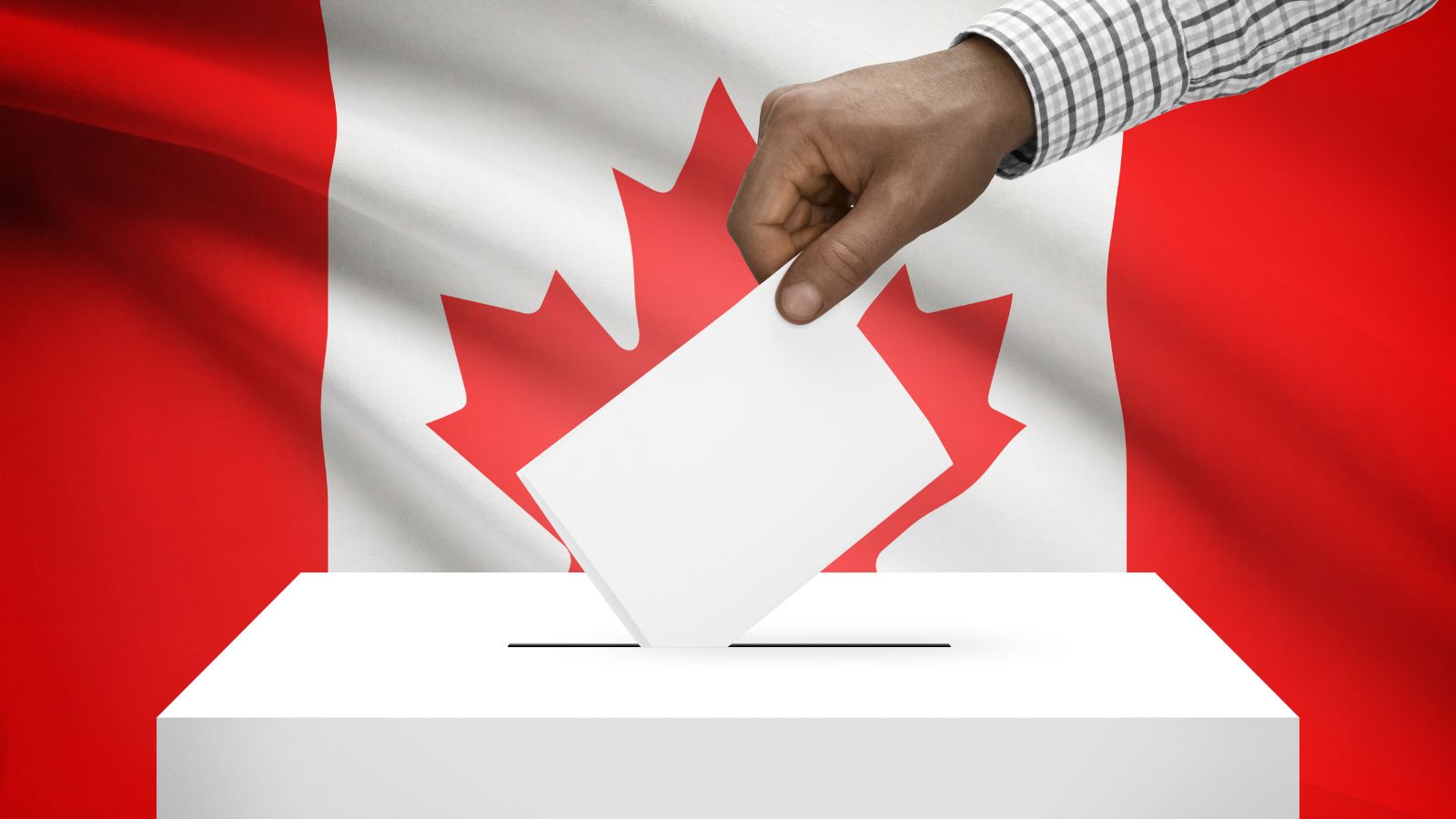The Canada–U.S. rivalry often comes with jokes about accents, hockey, and maple syrup, but facts reveal a more serious edge. Canada quietly outperforms the United States in several measurable areas that affect quality of life. From healthcare and education to workplace rights and social programs, the data paints a clear picture of a country that gets many fundamentals right. Here are 21 things Canada does better than the U.S.A., backed by facts.
Healthcare Affordability

The United States spends over US$12,000 per person on healthcare each year, nearly twice Canada’s per-capita cost of about US$6,300. Canada’s single-payer model ensures citizens receive medically necessary services without direct bills, while Americans often face insurance gaps and high deductibles. Despite spending less, Canada achieves comparable or better outcomes in many key indicators, making its system far more cost-efficient. Universal access and administrative simplicity reduce waste and personal financial stress. The structure may not be flawless, but it prevents millions from choosing between medical care and bankruptcy, a common dilemma south of the border.
Life Expectancy and Health Outcomes

Average life expectancy in Canada sits at about 82.6 years compared to roughly 76.3 years in the United States. Infant mortality and chronic disease rates are also lower, reflecting stronger preventive care and broader access. Because Canadians face fewer barriers to primary healthcare, diseases are often detected earlier and treated consistently. The overall health of the average Canadian is better, even though total spending is far lower. These numbers highlight a fundamental success: universal access not only saves money but helps people live longer, healthier lives with fewer avoidable complications or untreated conditions.
Parental Leave Rights

Canadian parents enjoy up to 50–61 weeks of job-protected maternity and parental leave, depending on the plan they choose. This is supported by federal employment insurance that pays a portion of earnings during the leave. In contrast, the United States has no guaranteed paid parental leave at the national level. Parents there often rely on employer policies or unpaid time off, creating immense financial strain. The difference ensures Canadian families experience more bonding time and less stress in their child’s earliest year, a policy choice that supports both family well-being and long-term child development.
Paid Sick Leave

Several Canadian provinces require employers to provide paid sick days, and many offer job protection for longer unpaid medical absences. This means workers can recover without losing income or fearing termination. The United States, however, has no federal law guaranteeing paid sick leave, leaving millions of workers exposed. Studies show that Canadians take fewer overall sick days per worker yet maintain better public-health outcomes during outbreaks. It’s a system that values preventive health and stability. By institutionalizing basic protections, Canada demonstrates that economic productivity and compassion can coexist effectively.
Education Quality and Access

Canada consistently ranks among the top performers in global education rankings. According to OECD data, Canadian students outperform their American counterparts in reading, science, and math. Postsecondary education participation is also higher, supported by public universities with lower tuition fees. While not free, the average annual tuition at Canadian universities is around C$7,000 compared to over US$10,000 in the U.S. for public institutions. Broader accessibility, quality standards, and equitable funding help maintain high literacy rates and a skilled workforce. Education remains a cornerstone of Canada’s long-term economic and social advantage.
Social Mobility

Children in Canada have a better chance of earning more than their parents compared to children in the United States. Intergenerational mobility studies show Canadian incomes are less tied to family background, indicating greater opportunity. Public healthcare, subsidized education, and family support programs play key roles in this outcome. The “American Dream” may have originated south of the border, but data shows it’s more achievable north of it. Canada’s policy mix reduces inherited disadvantage, allowing people’s efforts to matter more than their starting point in life.
Retirement Stability

Canadian retirees experience lower poverty rates than American seniors thanks to programs like Old Age Security and the Guaranteed Income Supplement. Combined with universal healthcare, these supports protect older adults from catastrophic expenses. The U.S. system, heavily reliant on private pensions and personal savings, leaves many vulnerable to income shocks. With fewer retirees falling below the poverty line, Canada provides a more secure and predictable retirement. This stability also reduces pressure on families and social services, proving that well-designed national programs can prevent late-life hardship efficiently and affordably.
Cost of Prescription Drugs

Prescription medications are far cheaper in Canada due to government price regulation and bulk purchasing power. Americans often pay two to four times more for identical drugs, driven by unregulated pricing and complex insurance systems. Lower pharmaceutical costs in Canada reduce total healthcare spending and improve access to life-saving treatments. The system prioritizes affordability without compromising quality or innovation. In practical terms, that means Canadians refill necessary prescriptions more consistently, leading to better chronic-disease management and fewer hospitalizations. It’s a small policy difference that delivers enormous health and financial benefits.
Childcare Accessibility

Affordable childcare has been a national focus in Canada, with several provinces implementing programs to cap daily fees. Quebec’s model, offering daycare for as little as C$10 per day, became a benchmark for success, leading to higher female workforce participation and lower child poverty. In contrast, U.S. families can spend 20–30 percent of their income on childcare. Canada’s emerging national childcare plan aims to expand this affordability nationwide. By reducing the cost burden on parents, the country promotes economic equality and strengthens long-term workforce participation.
Income Equality

Income inequality is less severe in Canada than in the United States. The Gini coefficient, a standard inequality measure, sits around 0.32 for Canada versus roughly 0.41 for the U.S. Progressive taxation, stronger social transfers, and accessible healthcare all narrow the gap between high and low earners. Canadians experience fewer extremes of wealth and poverty, which translates into greater social stability and public trust. While inequality still exists, the overall balance creates a fairer society with less polarization and more shared economic benefits across regions and demographics.
Crime and Safety

Violent crime rates are generally lower in Canada. For example, homicide rates are roughly one-third those in the United States per 100,000 residents. Gun ownership laws and stricter firearm regulations contribute to this difference. Everyday safety metrics, including robbery and assault statistics, also lean in Canada’s favor. Citizens report feeling safer walking alone at night in most urban centers. Fewer weapons, broader social supports, and less economic disparity combine to produce calmer communities. While not crime-free, Canada’s emphasis on prevention over punishment leads to consistently safer public spaces.
Voter Turnout and Electoral Access

Canadian federal elections routinely see voter turnout around 65–70 percent, significantly higher than the 50–60 percent typical in U.S. presidential elections. Factors like automatic voter registration, national voting day scheduling, and simplified ballots make participation easier. Voting rights are also uniform nationwide, unlike the patchwork systems across American states. Higher engagement ensures stronger representation and public legitimacy. This structure builds faith in democratic institutions, which remains crucial as global voter confidence declines. By emphasizing accessibility over bureaucracy, Canada sustains a healthier democratic culture with fewer disputes and barriers.
Infrastructure Quality

National infrastructure, including roads, bridges, and public transit, consistently ranks higher in global evaluations. Public investments maintain better maintenance standards and environmental planning, particularly in large cities such as Vancouver and Montreal. Canadian transit projects often prioritize sustainability and accessibility, while many U.S. systems struggle with underfunding and aging design. Federal and provincial coordination allows for more consistent upgrades. As a result, Canadian infrastructure tends to age more gracefully, providing reliable service without the widespread deterioration seen in several American metropolitan areas.
Environmental Policy

Canada enforces stricter environmental regulations across the energy, mining, and manufacturing sectors. National emissions standards, carbon pricing, and renewable energy incentives promote sustainable industry growth. While fossil fuels remain significant, investments in clean technology are accelerating. The United States, although improving, faces greater political polarization on climate policy. Canada’s nationwide approach fosters long-term consistency. This balance of environmental accountability with resource development ensures cleaner air and water, helping the country rank among the top OECD nations for environmental performance indicators.
Food Safety and Labeling

Canadian food regulations require clearer labeling and stronger oversight than U.S. federal standards in many categories. Additives, pesticides, and genetically modified ingredients are subject to tighter scrutiny. Consumers benefit from transparent packaging that indicates allergens, nutritional content, and sourcing details. The Canadian Food Inspection Agency enforces uniform national standards, reducing confusion and risk. This cohesive structure builds trust in domestic food systems and protects public health. In contrast, America’s more fragmented regulatory approach often leads to inconsistencies across states and manufacturers.
Public Broadcasting and Cultural Protection

The Canadian Broadcasting Corporation (CBC) ensures national representation and access to domestic programming even in remote areas. Public funding supports news, arts, and Indigenous content, preserving linguistic and cultural diversity. American networks operate primarily on commercial models, leading to greater concentration of ownership. Canada’s cultural policy encourages balanced storytelling that reflects regional perspectives. By investing in homegrown media, it maintains a sense of shared national identity while supporting creative industries that might otherwise struggle against U.S. market dominance.
Work-Life Balance

Average Canadians work fewer annual hours than Americans, with shorter workweeks and more vacation time mandated by law. Most provinces guarantee at least two weeks of paid vacation, increasing with seniority. In the United States, paid vacation is not federally mandated, and millions receive none. The difference shows in lifestyle data: Canadians report higher satisfaction with work-life balance and lower stress levels. This structure doesn’t harm productivity; instead, it supports mental health, family time, and long-term performance, a straightforward win for both employees and employers.
Access to Nature and Public Land

Public lands are widely accessible, with vast national and provincial parks maintained for recreation. Entrance fees remain affordable, and development within protected zones is limited. The U.S. also has an impressive park system but faces higher commercialization and overcrowding. In Canada, outdoor access feels more inclusive, encouraging citizens to engage with nature regularly. The approach protects biodiversity while promoting tourism and community wellbeing. Strong conservation policies ensure that natural spaces remain available for future generations without being reserved for the affluent few.
Urban Planning and Clean Cities

Canadian cities often emphasize mixed-use zoning, walkability, and transit connectivity. Urban design balances residential and commercial spaces, limiting suburban sprawl compared to many U.S. metros. Cities like Calgary and Ottawa consistently rank high for cleanliness and air quality. Strict waste management and recycling standards reinforce environmental responsibility. While housing affordability remains a challenge, the urban planning framework promotes sustainability and livability over unchecked expansion. The outcome is cleaner, safer, and more efficient urban environments that serve people instead of just vehicles.
Multicultural Integration

Canada’s multiculturalism policy formally recognizes and protects diverse cultural identities. Immigration processes include settlement programs, language support, and equal rights protections. This inclusive structure has contributed to smoother integration and less ethnic polarization. In the United States, assimilation expectations often create division and political tension. By treating cultural diversity as an asset rather than a challenge, Canada fosters social cohesion. The result is a stronger sense of belonging among immigrants and fewer barriers to civic participation, helping multiculturalism work in practice rather than just on paper.
Gun Regulation and Public Safety

Strict licensing, background checks, and limits on firearm ownership contribute to significantly fewer gun deaths per capita than in the United States. Mass shootings are rare, and the overall firearm homicide rate is about one-fifth that of the U.S. Regulation emphasizes prevention and accountability rather than unrestricted ownership. These policies don’t eliminate crime but greatly reduce large-scale violence and accidental deaths. Public consensus supports such laws, showing how collective safety can coexist with individual rights when regulation is grounded in common sense and community priorities.
21 Products Canadians Should Stockpile Before Tariffs Hit

If trade tensions escalate between Canada and the U.S., everyday essentials can suddenly disappear or skyrocket in price. Products like pantry basics and tech must-haves that depend on are deeply tied to cross-border supply chains and are likely to face various kinds of disruptions
21 Products Canadians Should Stockpile Before Tariffs Hit
